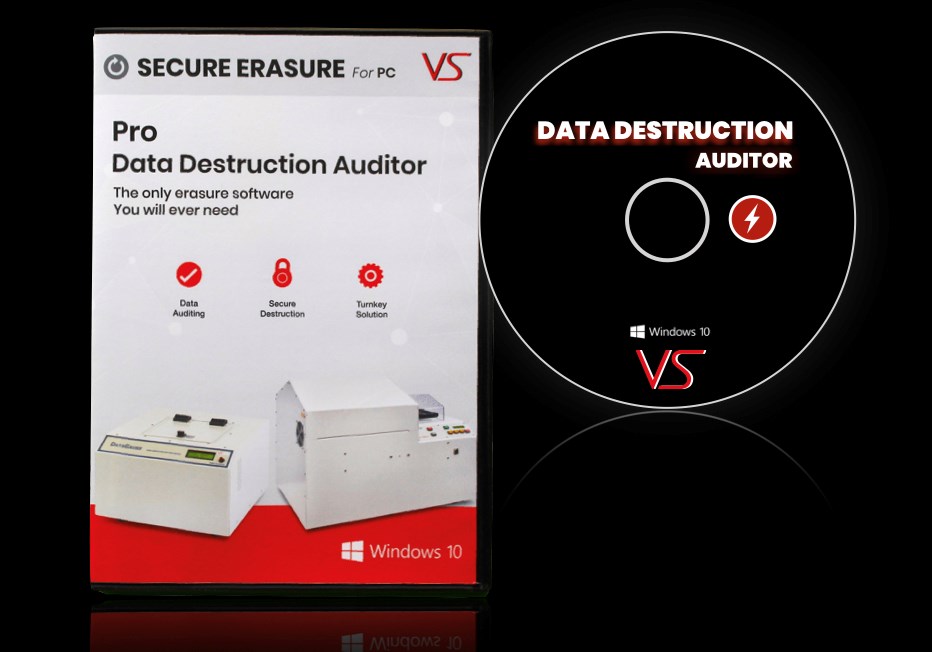Data Destruction Solutions: A Crucial Element in Your Cyber Security Method
Data Destruction Solutions: A Crucial Element in Your Cyber Security Method
Blog Article
The Essential Nature of Information Damage in Upholding Computer Protection Solutions and Protecting Versus Unauthorized Access
In an era where data breaches and identity theft are progressively common, the significance of reliable data devastation can not be overstated. Numerous approaches, from data cleaning to physical destruction, serve as crucial safeguards versus unauthorized access.
Value of Data Devastation
In an increasingly electronic globe, the relevance of information damage can not be overemphasized. As organizations amass huge quantities of delicate details, the potential repercussions of stopping working to properly get rid of and manage of that information come to be increasingly extreme. Data breaches, identity burglary, and corporate espionage position considerable dangers, underscoring the necessity of effective data destruction techniques.

Moreover, as innovation progresses, so too do the approaches by which destructive stars seek to make use of sensitive information. Organizations has to continue to be cautious and positive in their data damage approaches to guard versus these evolving hazards. By focusing on data damage, business not just secure their possessions yet likewise foster count on amongst clients and stakeholders, showing a dedication to responsible data monitoring and safety and security practices.
Techniques of Effective Information Damage
To guarantee the irreversible and total damage of delicate information, organizations can use a range of reliable techniques customized to their certain needs. One of the most common methods is information cleaning, which involves using specialized software to overwrite existing information several times, making recuperation basically impossible. This is particularly useful for solid-state drives and difficult drives, where traditional removal approaches are poor.
Another effective method is degaussing, which uses strong magnetic fields to disrupt the magnetic domain names on storage media, providing the data irretrievable. This method is especially matched for magnetic storage tools, such as disk drive and hard drives.
Physical devastation is likewise a practical option, including the shredding, crushing, or incineration of storage space devices. This approach guarantees that information can not be recouped, making it excellent for companies taking care of extremely sensitive info.

Compliance With Data Protection Rules
Organizations need to not only concentrate on efficient information destruction methods however additionally ensure conformity with information protection regulations that control just how sensitive information is dealt with and thrown away. Adhering to these guidelines is essential for maintaining and protecting personal information client trust. Rules such as the General Data Defense Guideline (GDPR) in the European Union and the Health And Wellness Insurance Coverage Transportability and Accountability Act (HIPAA) in the United States impose rigorous standards on information management, which consist of demands for the protected disposal of delicate info.
To accomplish conformity, organizations should implement extensive information destruction policies that straighten with these legal frameworks. This includes determining data that requires destruction, developing methods for protected methodsâEUR" such as shredding physical media or utilizing software program that satisfies market standards for data wipingâEUR" and preserving thorough records of damage activities. Normal audits should be carried out to make sure adherence to these plans and to determine any type of potential areas for enhancement.
Failing to abide by data security guidelines can lead to substantial legal ramifications, including substantial penalties and damages to an organization's credibility. For that reason, integrating click here for more info compliance right into information damage methods is not just a legal commitment but also a crucial element of a robust details safety method.
Repercussions of Poor Information Handling
Poor data handling can bring about serious effects that prolong beyond immediate operational setbacks. Organizations might deal with significant financial losses because of data violations, which usually result read this article in costly remediation initiatives, legal charges, and regulatory fines. These financial effects can strain resources and prevent development, ultimately affecting a company's lower line.
Furthermore, poor data handling can seriously harm an organization's credibility. Customers, partners, and stakeholders might shed count on in an entity that falls short to safeguard delicate information, leading to reduced consumer commitment and prospective loss of company opportunities. This disintegration of trust can take years to reconstruct, if it can be brought back in any way.
Furthermore, organizations can encounter lawful implications emerging from non-compliance with data security policies. Such offenses may cause investigations and charges, worsening the monetary concern and additional tarnishing the organization's image.
In the realm of cybersecurity, insufficient data monitoring techniques can create vulnerabilities that make systems much more susceptible to unauthorized gain access to and cyberattacks. Ultimately, these consequences highlight the vital value of implementing durable information handling treatments to safeguard sensitive details and preserve business stability.
Best Practices for Secure Data Disposal


To start with, information should be Continued classified according to its level of sensitivity. Sensitive information needs extra strenuous disposal approaches, such as shredding physical documents and making use of advanced software for electronic information cleaning. Employing licensed information devastation services guarantees conformity with sector laws and requirements.
Second of all, companies must apply a data disposal plan that mandates routine audits. This plan should detail the procedures for data retention and devastation, guaranteeing that outdated data is gotten rid of promptly and safely. Training staff members on these procedures is important to promoting a culture of safety understanding.
Lastly, maintaining detailed documents of disposed data enhances liability and offers a clear audit trail. This paperwork must consist of the kind of information ruined, the method utilized, and the date of disposal.
Conclusion
In verdict, the critical of effective information destruction appears in its duty in boosting computer safety solutions and alleviating unapproved access threats. Adopting robust approaches such as data wiping, degaussing, and physical devastation, together with conformity with regulations like GDPR and HIPAA, is essential for safeguarding sensitive information. Overlooking appropriate data disposal methods can result in severe repercussions, including data breaches and legal repercussions. Implementing best practices in protected data disposal eventually fortifies business stability and customer trust.
In an age where information breaches and identification burglary are significantly widespread, the significance of efficient data devastation can not be overstated. data destruction. Information violations, identification burglary, and corporate reconnaissance posture significant dangers, underscoring the need of effective information destruction techniques
Conformity with laws such as GDPR and HIPAA mandates that companies apply stringent information defense procedures, including the safe destruction of data at the end of its lifecycle.
By prioritizing information damage, firms not just protect their possessions but also foster depend on amongst stakeholders and customers, demonstrating a commitment to liable data management and protection practices.
Organizations should not only focus on efficient data devastation techniques yet additionally make certain compliance with data protection regulations that control how sensitive info is managed and disposed of.
Report this page